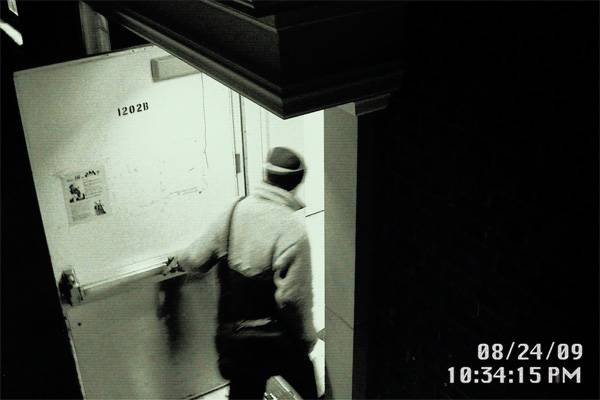A watchful eye

Iowa State is installing security cameras in and around the residence halls before August 2009. The goal is to help the university answer questions about incidents that happen and to discourage negative behaviors. Photo illustration: Manfred Strait/Iowa State Daily, Graphic: Brian Hanson/Iowa State Daily
January 27, 2009
Security cameras will be added to residence halls before the coming school year.
After eight months of discussion about increasing security in the residence halls, the Department of Residence will install the security cameras to entrances, exits and elevators in residence halls including Frederiksen Court, Wallace, Buchanan, Maple-Willow-Larch and Friley. Cameras will also be added to the Frederiksen Court and Schilletter & University Village Apartments community centers.
They will not be installed in the living spaces.
Cameras will aid in preventing and responding to the vandalism and safety issues that sometimes have occurred in the dorms.
Pete Englin, director of the department of residence, said safety hazards in elevators include jumping up and down and overloading.
Some vandalism, health and safety concerns happening in the halls, such as broken lights and knobs, could be prevented by the installation of cameras.
Englin said, two years ago, a dead deer was brought into the MWL elevator.
Ebony Williams, Willow Hall director, said she received a call that the deer was in the elevator and was brought out onto the fourth floor.
By the time she arrived at the scene, some residents had already disposed of the deer.
They were not able to find out who brought the deer onto the elevator.
“We did the best we could trying to find out who was responsible,” Williams said.
To help prevent situations like this, Williams said that “security cameras could be helpful, but I also think that continuing to talk to students to respect their community.”
Questions about incidents such as assault and unauthorized entry could be resolved as well.
“Should something happen, we can evaluate who came in [to the residence halls] at what time,” Englin said.
The Frederiksen Court Community Council and the Inter-Residence Hall Association voted to support installing the cameras.
The cost of the cameras will be about $500,000.
This could help reduce vandalism in those areas, which can cost from about $40 to $60,000.
Rob Bowers, associate director of public safety, said there are two types of surveillance monitoring: proactive and reactive.
Proactive is a type of surveillance where individuals actively monitor cameras as footage is being recorded.
However, with a few exceptions, Bowers said cameras on campus are used in a reactive way, in which footage is monitored as needed.
“That’s the way the cameras are used 95 percent of the time on campus,” he said.
For the most part, Englin said, the cameras in the residence halls would be used in a reactive way. The only time any of the cameras would be monitored in real-time would be if it was deemed necessary due to an emergency call.
“We could go back and review the tapes,” Englin said. “It’s just designed to enhance the security of the building.”
For convenience and to save money, the installation of cameras will occur at the same time as the wireless lines in the residence halls.
“We expect that may be even late spring semester we will start the installation,” Englin said, “and by the next academic year, fall of 2010, it should be 100 percent installed.”
Maggie Hamilton, program coordinator for access control at facilities planning and management, is in charge of the cameras that are on the facilities planning and management system.
There are different departments that have security cameras which monitor select areas on campus.
Hamilton said the cameras currently record their footage to a “secured location” inside the general services building, but no one at facilities planning and management monitors the cameras in real-time.
The departments that have cameras have the right to view their footage, which they can do with a username and password from an Internet browser.
“They have rights to view their cameras at any time, and they have that capability,” Hamilton said.
How long the footage is stored is based on the desires of each department.
When deciding where to put cameras, a number of people are called to consult with the individual departments where best to put the cameras.
“It’s primarily department driven,” Bowers said.
He said most areas on campus where there are cameras are clearly marked, because the goal is for them to act as a deterrent.
“And that’s really part of the design behind it, it’s not designed to be secret monitoring or anything like that, we want people to know,” Bowers said.
But even with all the security cameras on campus, they may not be able to solve all incidents. Often times, the footage recorded is as good as it gets.
“It’s not like CSI, where you can go in and look in the reflection off the mirror and identify somebody or go in and zoom all the way down in and get the license plate number,” he said.





